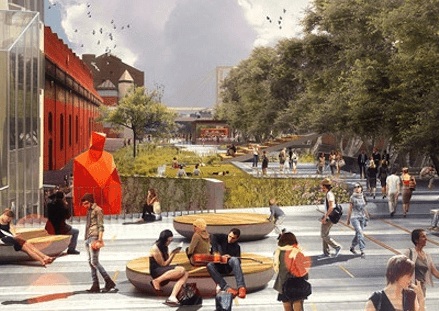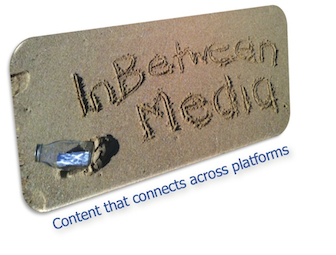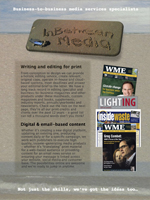 The latest event hosted by Green Capital was about as central to the definition of the ‘s’ word as you can get. Yes, that’s right, sustainability. But it didn’t necessarily see itself that way.
The latest event hosted by Green Capital was about as central to the definition of the ‘s’ word as you can get. Yes, that’s right, sustainability. But it didn’t necessarily see itself that way.
That’s due partly to Green Capital’s evolution from the corporate responsibility focus of the 2000s, to its current positioning “beyond CSR”. The independent hub, known for tackling the “big issues” is reaching for a more practical role in stimulating participation and exchange. The audience for the latest event, held on July 24th in Sydney was diverse, with less ‘big corporate’ presence. Perhaps not unexpected given the topic: sustainable precincts ‘think local, act local’.
Communication is a key part of its new program. Not simply in facilitating engagement between communities, commercial interests, cultural and creative activities, but in finding new and innovative ways to talk about sustainable ideas that have an unmistakably optimistic tone.
The new program, being embarked upon by Green Capital and a number of partners – namely UTS Business School, the Powerhouse Museum, Pyrmont Ultimo Chamber of Commerce and sustainability firm Banarra – aims to test and demonstrate the proposition that you can accelerate new greener, more sustainable economies effectively by working at the level of the local business precinct.
Senior advisor to Green Capital and sustainability communicator, Murray Hogarth says, “There are probably more examples of that being done at a local residential precinct model, we want to do it at a business level.
“We want to produce a case study and show the methodology we followed so other communities can look at it and how it might work in their local economy.”
It’s an inspiring message in light of the lack of conviction at a national policy level for carbon reduction, clean technology and sustainability.
The program will target several key areas with businesses: commercial retrofits, energy efficiency, energy production, circular economy, green space/biodiversity and digital technologies.
“To a certain extent we’re going optimistic,” in terms of the voice being employed by Green Capital, says Hogarth, “It’s innovation and technology rich, techno-optimist if you like”.
“We steer right around the depressing, paralysing and polarising issues like climate change and carbon policy. Instead we’re going directly to energy saving solutions, better open space, better places to work, but trying not to over-use words like ‘green’ and ‘sustainable’.”
The message is simple: local, precinct-level engagement for more sustainable economies is talking directly about the kinds of environments where people want to work, live and spend their time.
“It’s kind of a no-brainer,” says Hogarth, adding that establishing a really meaningful connection with communities of interest and location or even virtual communities, must include demonstrating value of tangible benefits.
Some of the work being undertaken by Ben Waters, previously of GE and also on the Green Capital event’s discussion panel, will look at ways of working with communities on precinct-level integrated solutions for energy and water.
While this kind of activity has begun to take off in Australia, such as community led renewable energy projects, the ‘think local, act local’ approach is also rippling through big business.
“They certainly have to be aware and engaged with it,” said Hogarth. “I think if businesses are perceived to be operating without regard to community and don’t have mechanisms for engaging community, and I mean in the broader sense of interest and co-location, then they are not utilising modern interactive technologies and being more democratic and transparent and open”.
He said those operating against the local/community led sustainability trends have a problem as they won’t be judged by how slick their sustainability report is but on real outcomes, like real energy savings and people’s “lived experience” of dealing with their business.
Some larger companies are already well advanced with community-based initiatives, such as Bendigo and Adelaide Bank. It has operated a Community Bank project for several decades that provides local employment, keeps local capital in the community, is a local investment option for shareholders and provides a source of revenue for projects determined by the community.
“They’ve been favoured bank for the divestment movement and opposition to coal seam gas,” said Hogarth, adding that Bendigo and Adelaide Bank supports community-led renewable energy development.
“What it looks like to me is that the community model that began for one reason is gathering more purpose really.”
Improving on a good idea
“Underlying all of this is the reality that you can sit around and bemoan the price on carbon and terrible things the government is doing or take hold of what you can do something about,” said Hogarth.
He recalled a comment made by David Suzuki when he visited Australia in 2012, referring to the 1970s and 80s mantra of ‘think local, act global’.
“He said, when you think globally you’re overwhelmed and demoralised and decide you can’t make a difference,” said Hogarth. “So we’re increasingly thinking about acting locally which can make a difference if enough people do it”.
The mainstream media came under criticism by several on the Green Capital discussion panel, for its partisan approach to issues of climate change and sustainability, and negativity towards business in general.
So, how will they be able to respond to the positive message of ‘think local, act local’? Hogarth wasn’t optimistic although he admitted there are exceptions.
“Broadly speaking they’re [the mainstream media] not looking to write about good stuff, they prefer conflict.”
While people may want to hear a positive message about climate change and sustainability, “the challenge for the media is to tell it in interesting and compelling ways”.
One driver may be the trend towards more local and personalised content. A key element of competing for media advertising dollars is now in demonstrating a deep understanding and engagement with your audience.
There’s no secret that print circulation is declining, but regional newspapers are holding up much better than their metro counterparts, especially those that are emotionally connected and highly engaged with local audience and invest in journalists.
As raised at the Green Capital event, decentralisation is not a panacea, whether it’s in relation to water, energy or the news media.
“I think broadly speaking, the new low-cost, low-barrier of entry to digital media does allow you to organise a lot more easily than we would have done in the past,” said Hogarth. He said the Ultimo Pyrmont sustainable precinct project might also bring together a new breed of businesses, as the area is fast developing into a creative digital hub, that “don’t necessarily use resources commensurate with the value they create… a lot of their value being in intellectual property rather than physical structures”.
Irrespective of whether information can travel faster and more directly to communities, Hogarth says if “we undermine the traditional media’s business model so much that they can’t do their job anymore, we will suffer from having less quality of information”.
In regard to the new and innovative methods that Green Capital will be deploying to communicate with participants in the Ultimo Pyrmont precinct, it’s early days. Much of the direction will come from stakeholders as the project takes form over the coming year, but like the rest of business it will also be seeking to do more with less. And whether that can be realised will in large part rely on effective platforms and finding new ways to communicate sustainability.


Comments are closed.